Abstract
Influenza activity was studied in the Rome population from 1956 to 1976 by analysis of mortality from respiratory causes and from all causes. During cold weather months, type A influenza virus was associated, as a rule, with epidemic excess deaths at two year intervals while type B virus was prevalent twice during isolation data were also compared with epidemic excess mortality during four consecutive years. The evidence obtained indicated that influenza virus isolation alone does not represent a reliable index of epidemic influenza activity in this population. The proportion of deaths attributed to respiratory causes consistently increased in every epidemic, the most pronounced increases occurring during large epidemics. The break-down by age of deaths from respiratory causes in the course of two epidemic periods showed that the percentage distribution of deaths was essentially the same as in non-epidemic periods. This evidence indicates that the same factors influencing the age-related distribution of mortality from respiratory causes during non-epidemic periods, probably affect the fatal outcome of influenza during epidemics.
Full text
PDF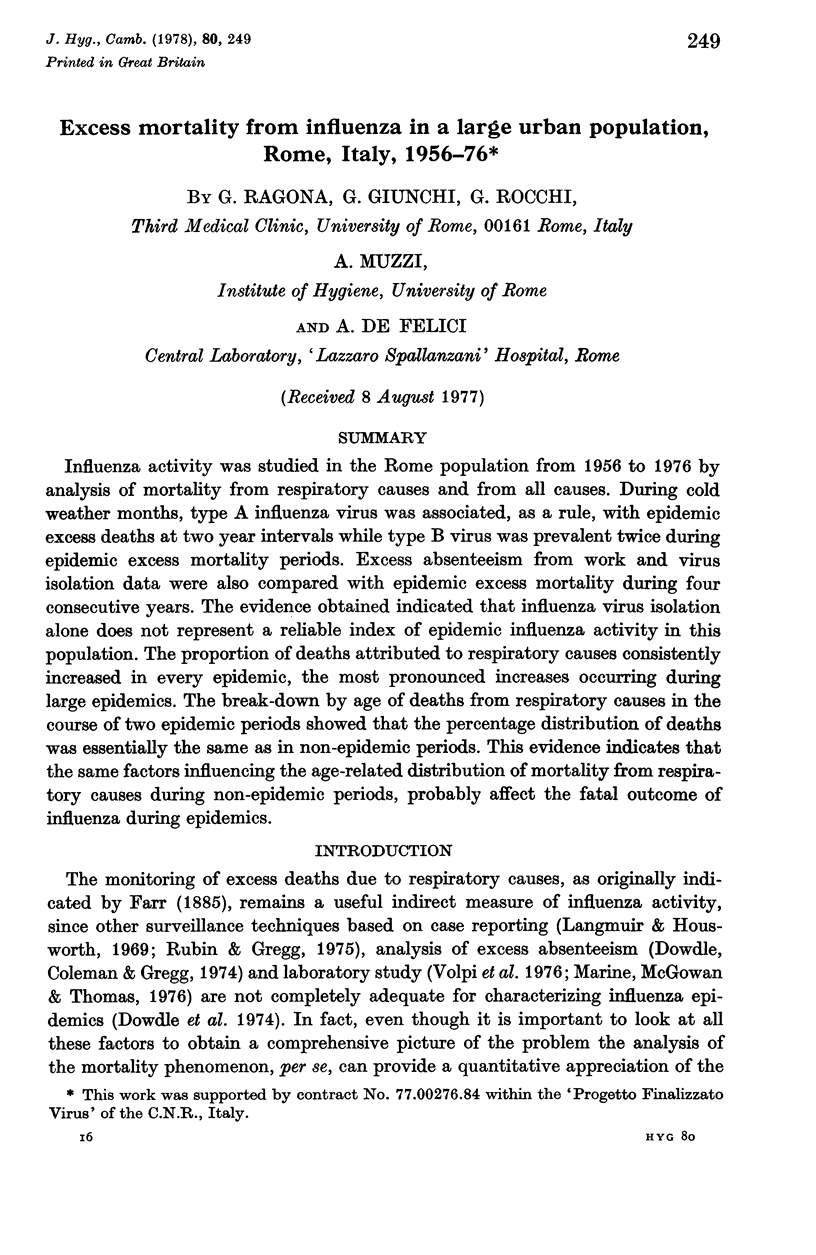
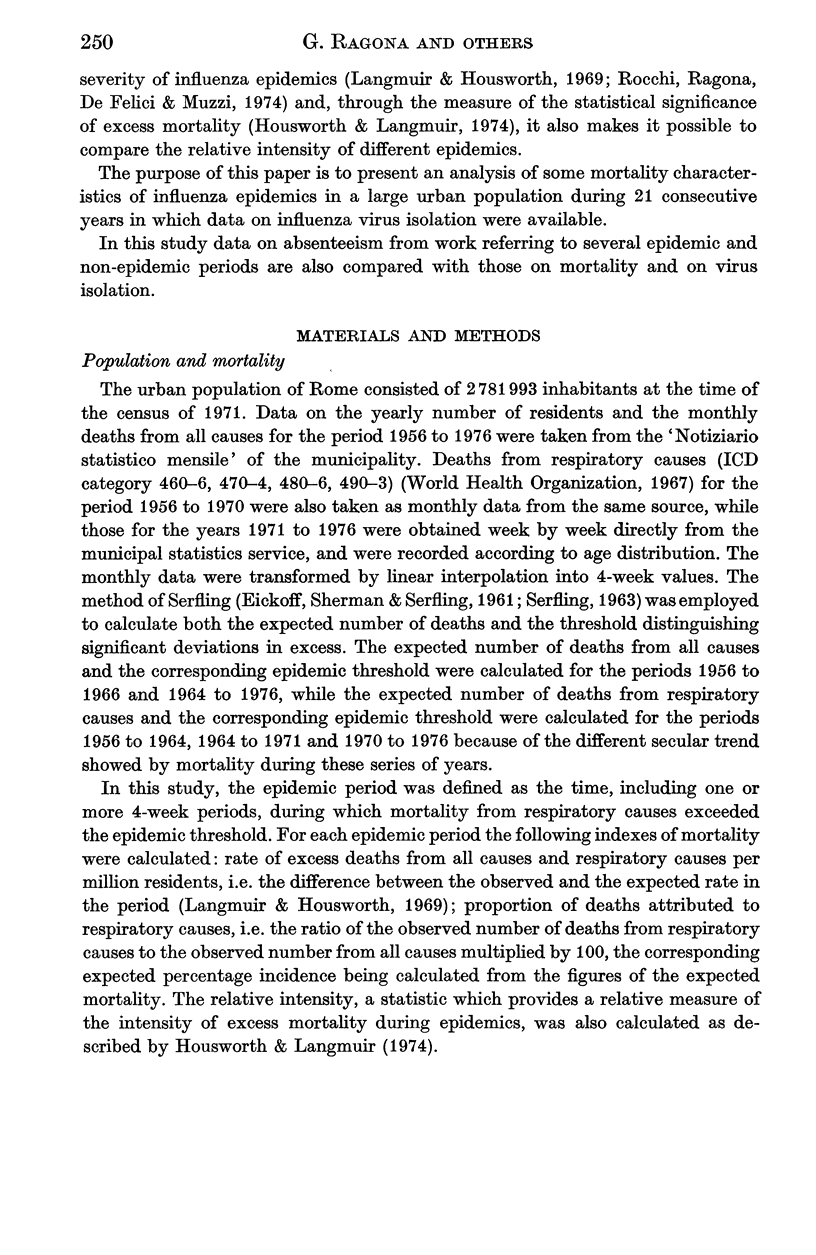
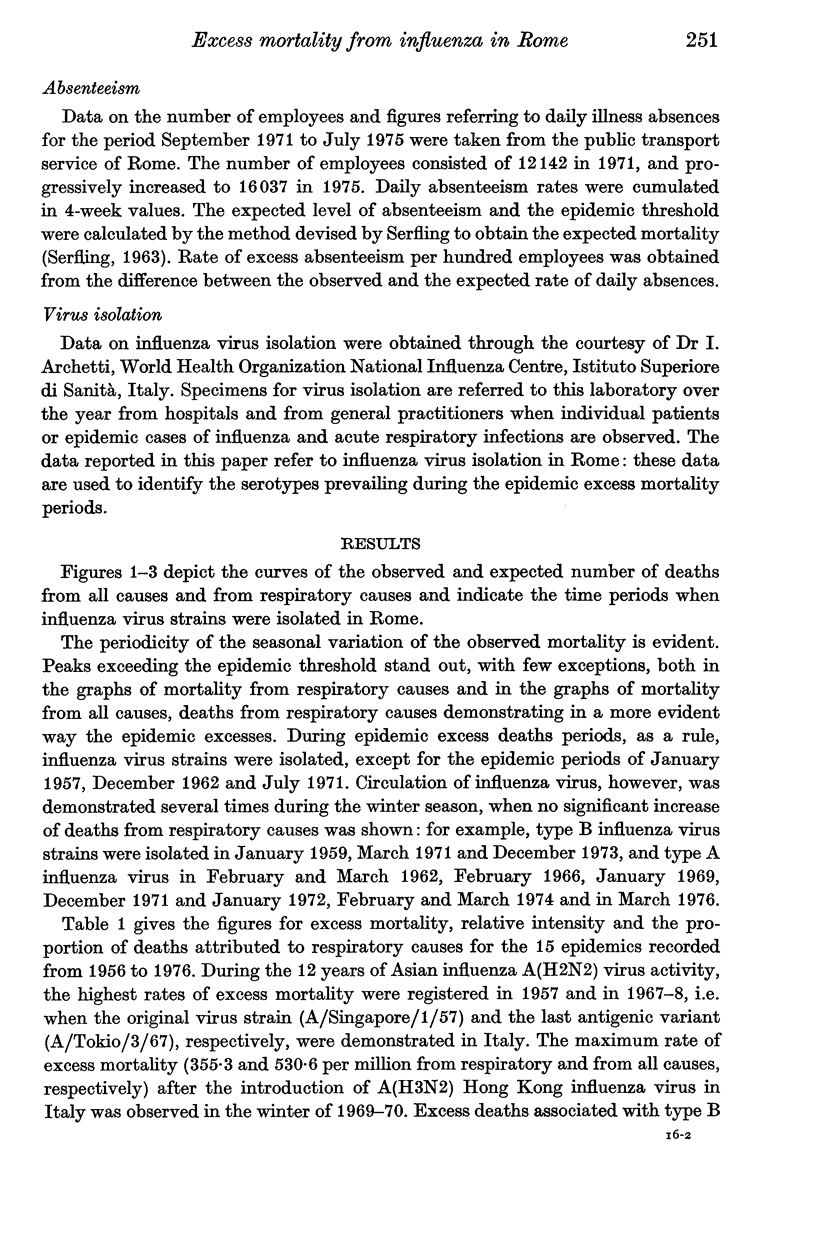
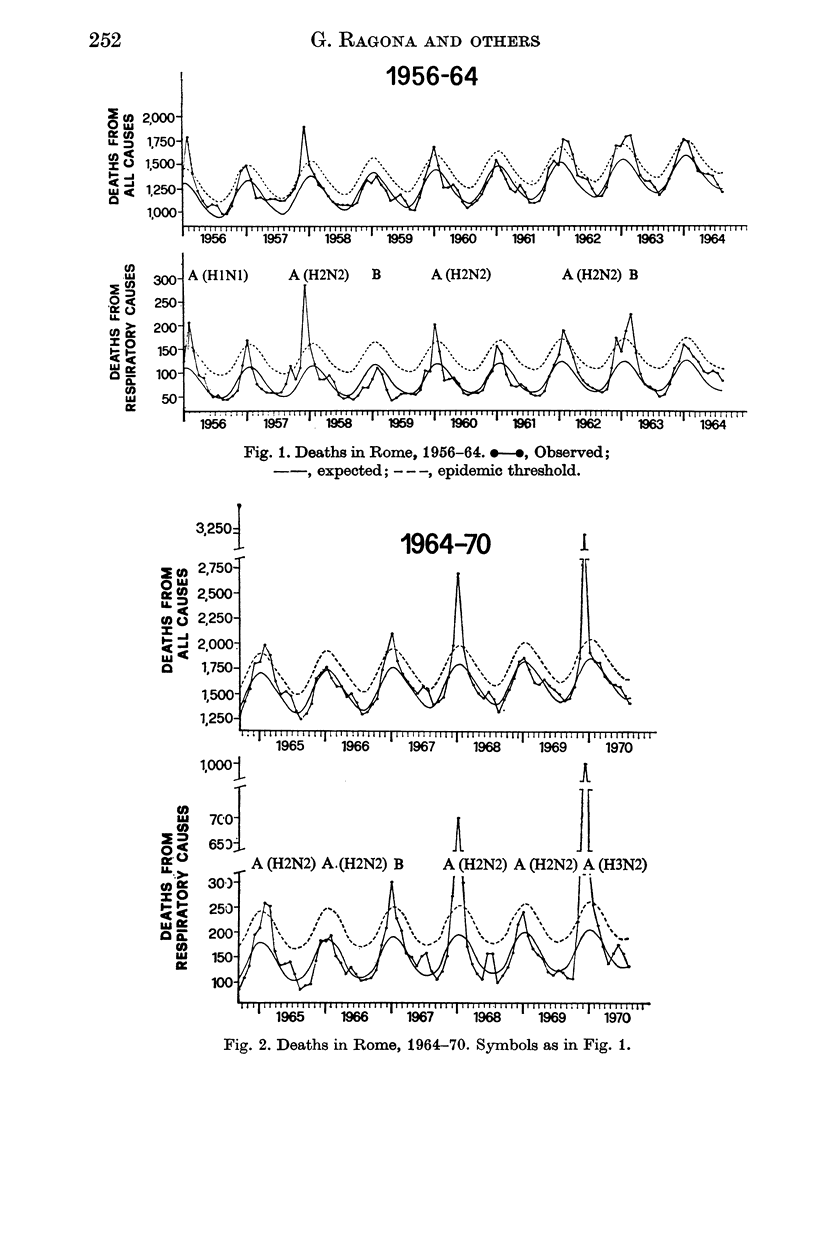
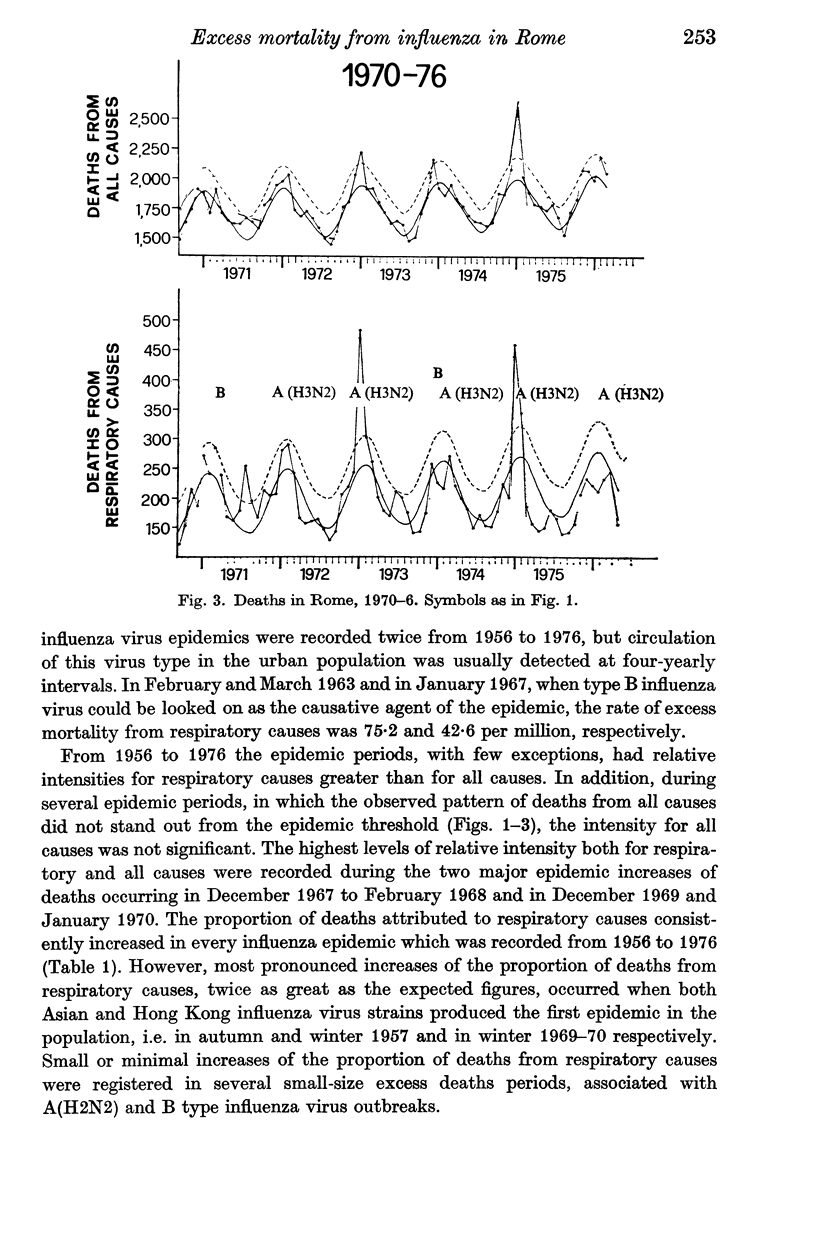
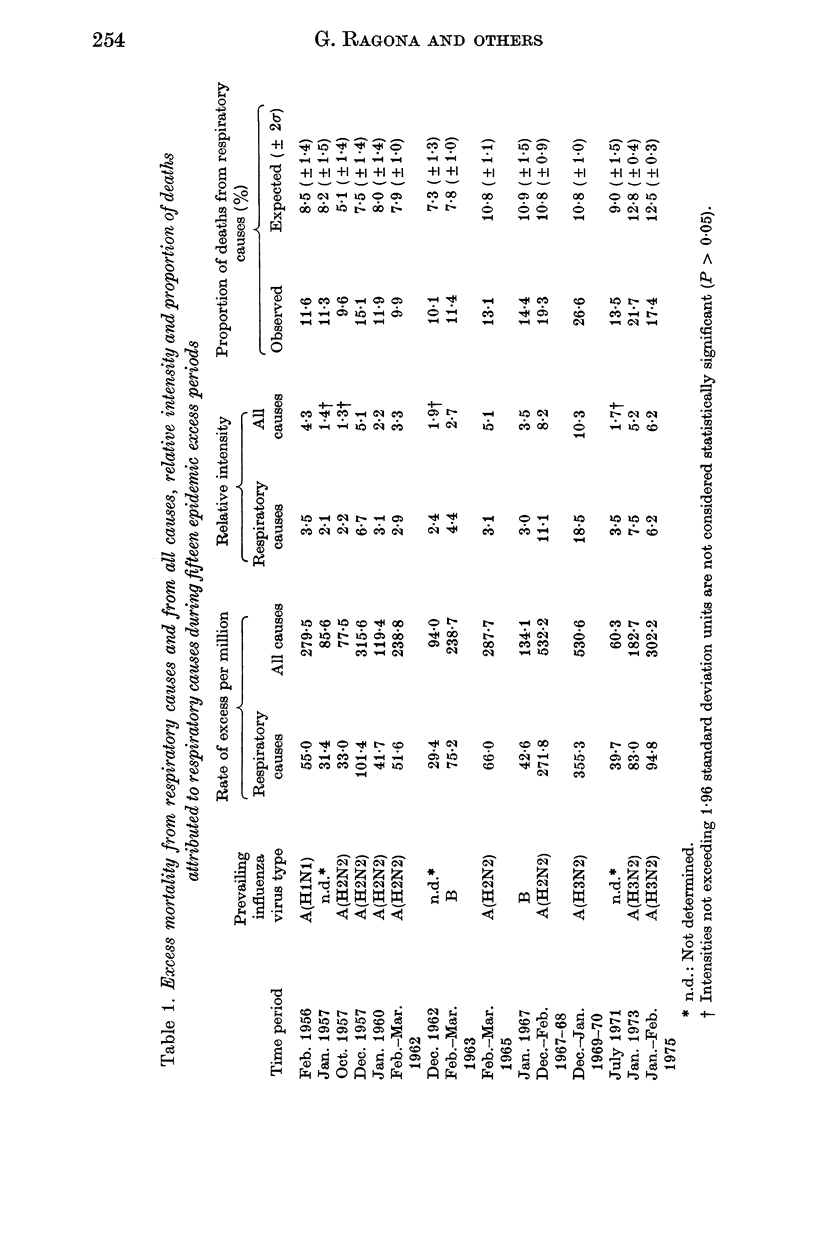
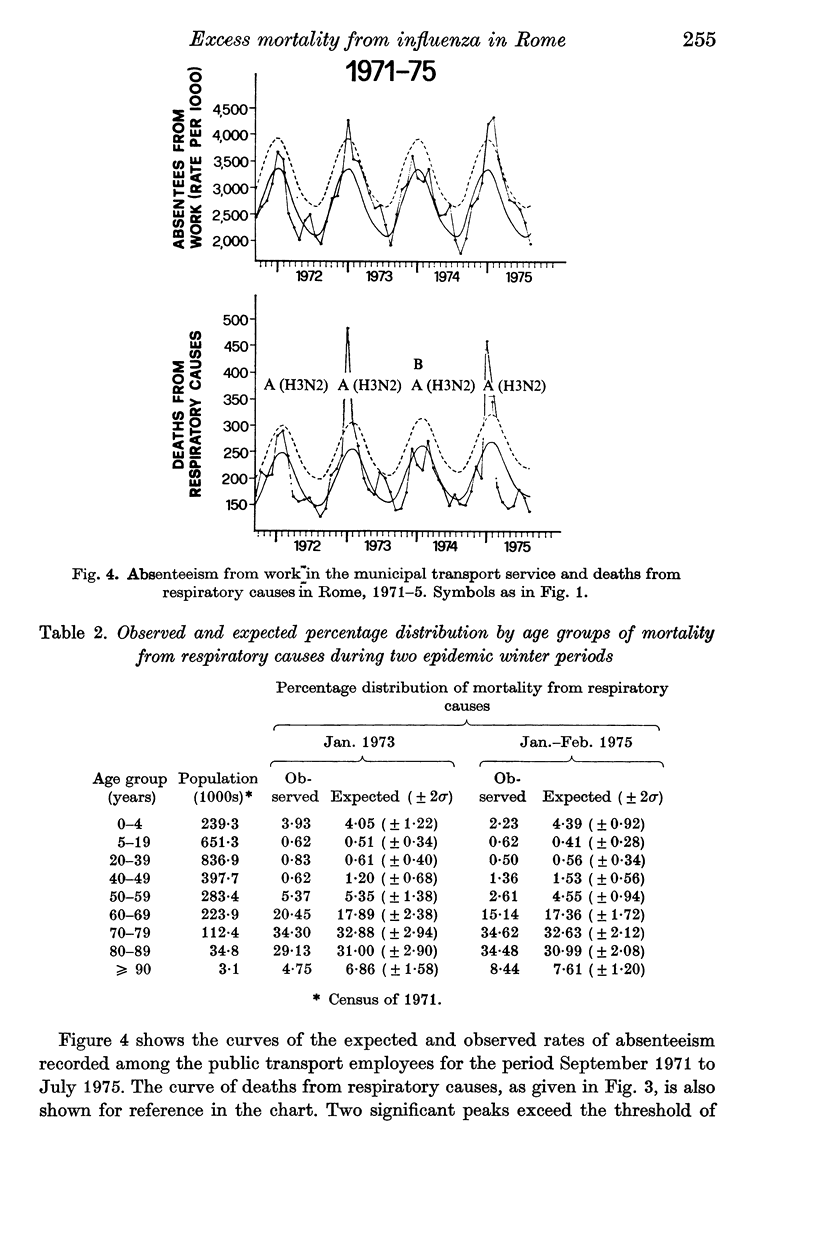
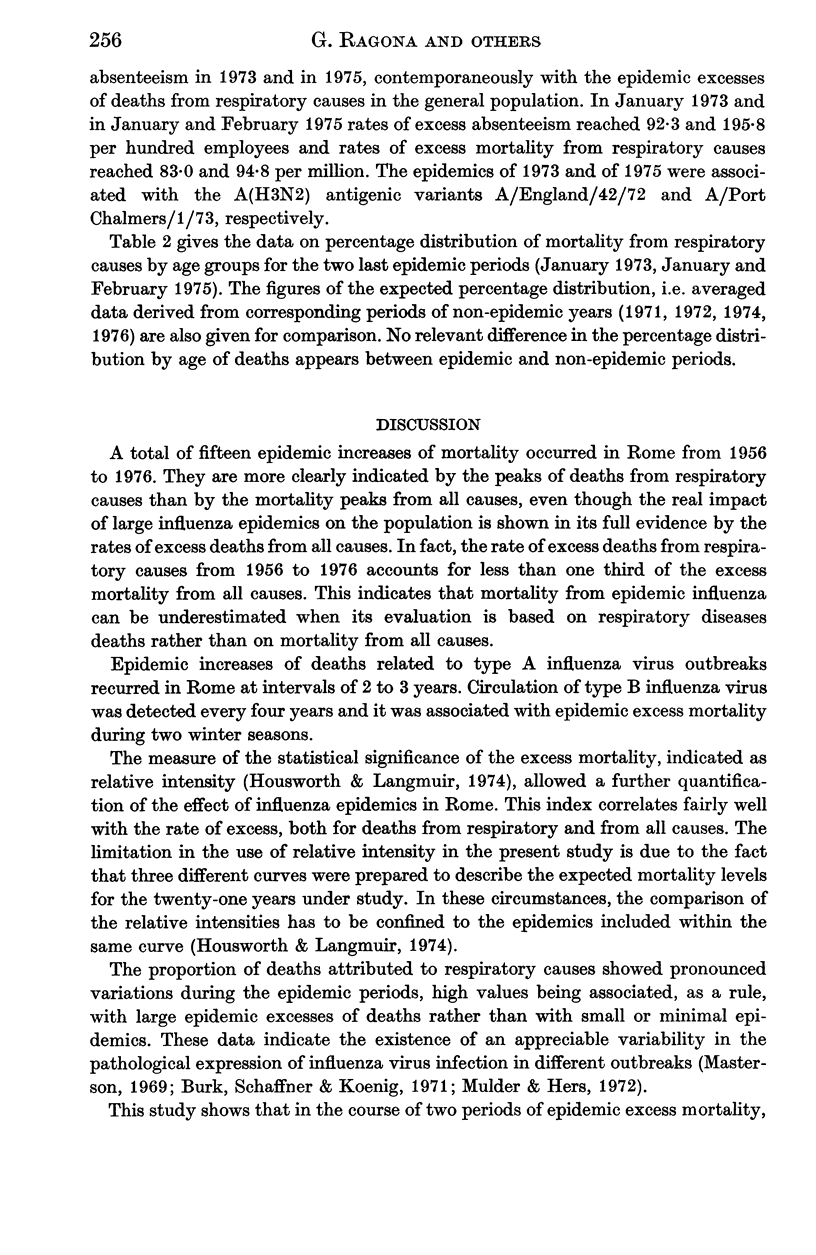
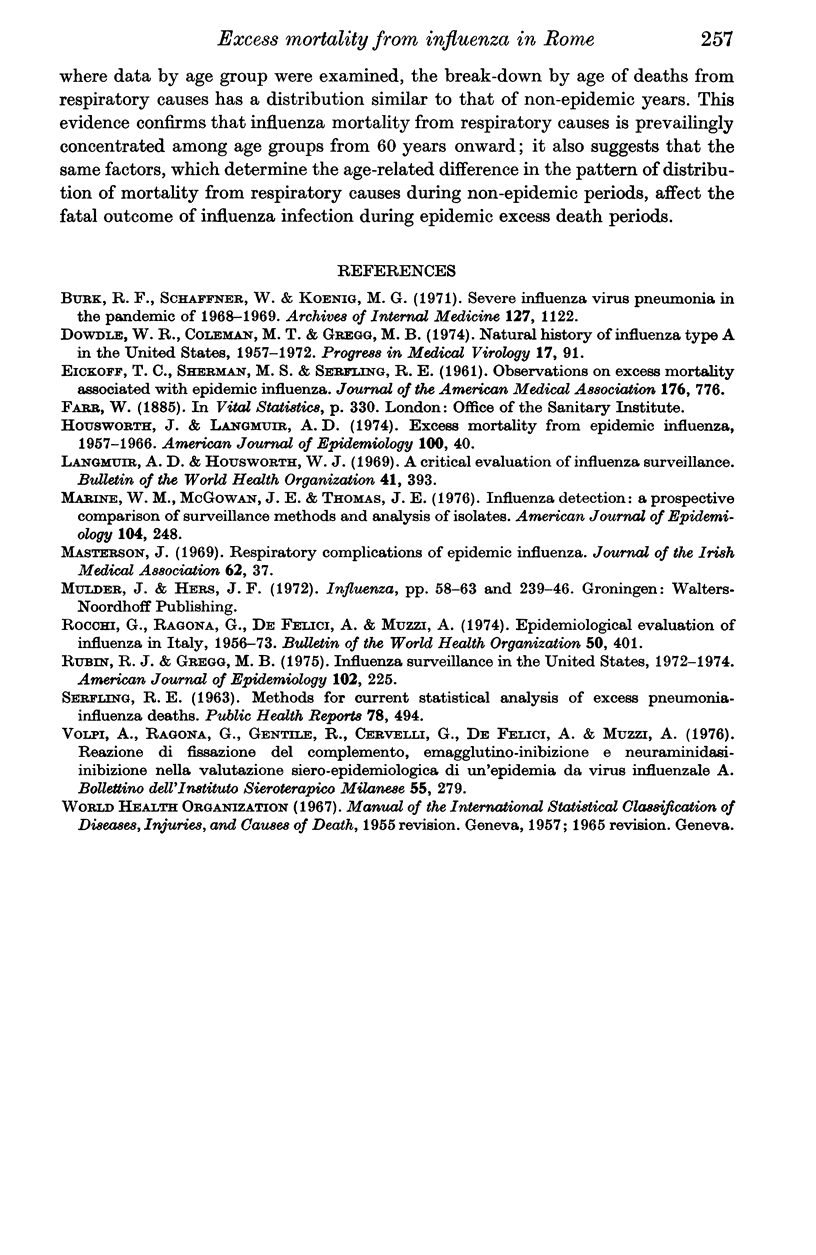
Selected References
These references are in PubMed. This may not be the complete list of references from this article.
- Burk R. F., Schaffner W., Koenig M. G. Severe influenza virus pneumonia in the pandemic of 1968-1969. Arch Intern Med. 1971 Jun;127(6):1122–1128. [PubMed] [Google Scholar]
- Dowdle W. R., Coleman M. T., Gregg M. B. Natural history of influenza type A in the United States, 1957-1972. Prog Med Virol. 1974;17(0):91–135. [PubMed] [Google Scholar]
- EICKHOFF T. C., SHERMAN I. L., SERFLING R. E. Observations on excess mortality associated with epidemic influenza. JAMA. 1961 Jun 3;176:776–782. doi: 10.1001/jama.1961.03040220024005. [DOI] [PubMed] [Google Scholar]
- Housworth J., Langmuir A. D. Excess mortality from epidemic influenza, 1957-1966. Am J Epidemiol. 1974 Jul;100(1):40–48. doi: 10.1093/oxfordjournals.aje.a112007. [DOI] [PubMed] [Google Scholar]
- Langmuir A. D., Housworth J. A critical evaluation of influenza surveillance. Bull World Health Organ. 1969;41(3):393–398. [PMC free article] [PubMed] [Google Scholar]
- Marine W. M., McGowan J. E., Jr, Thomas J. E. Influenza detection: a prospective comparison of surveillance methods and analysis of isolates. Am J Epidemiol. 1976 Sep;104(3):248–255. doi: 10.1093/oxfordjournals.aje.a112297. [DOI] [PubMed] [Google Scholar]
- Rocchi G., Ragona G., De Felici A., Muzzi A. Epidemiological evaluation of influenza in Italy. Bull World Health Organ. 1974;50(5):401–406. [PMC free article] [PubMed] [Google Scholar]
- Rubin R. J., Gregg M. B. Influenza surveillance in the United States 1972-1974. Am J Epidemiol. 1975 Sep;102(3):225–232. doi: 10.1093/oxfordjournals.aje.a112151. [DOI] [PubMed] [Google Scholar]
- Serfling Robert E. Methods for current statistical analysis of excess pneumonia-influenza deaths. Public Health Rep. 1963 Jun;78(6):494–506. [PMC free article] [PubMed] [Google Scholar]


